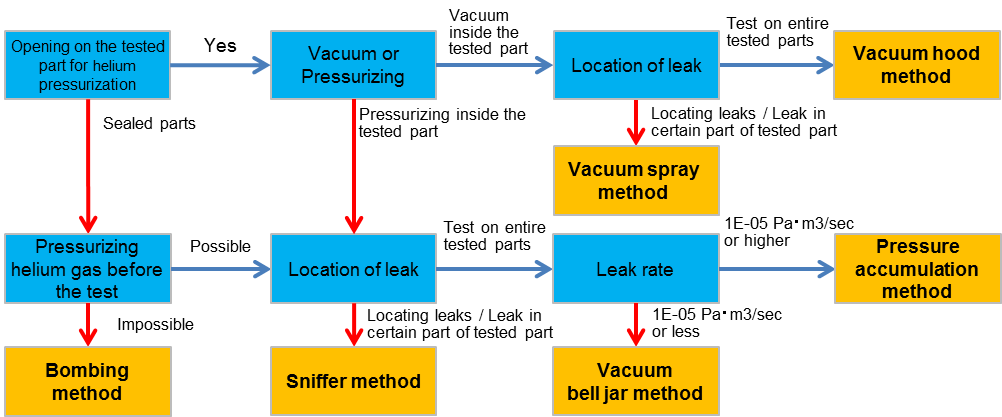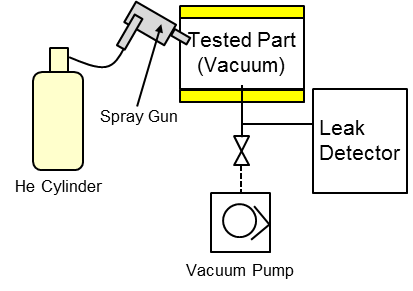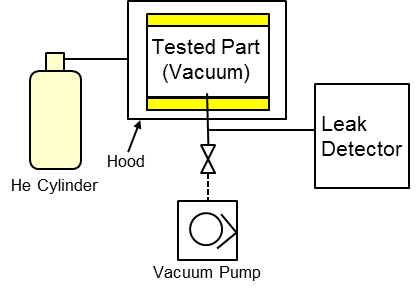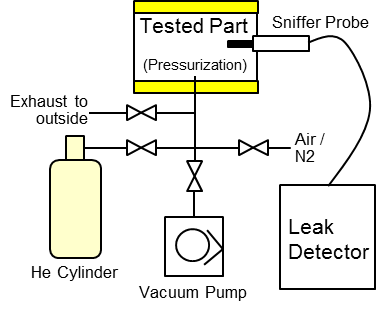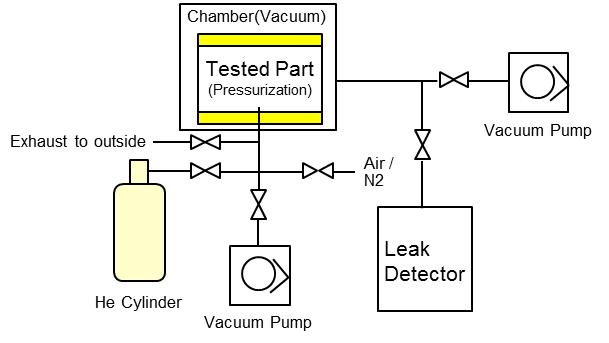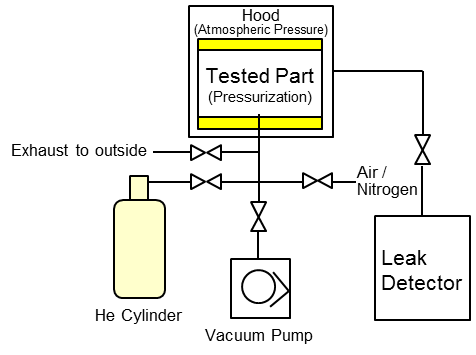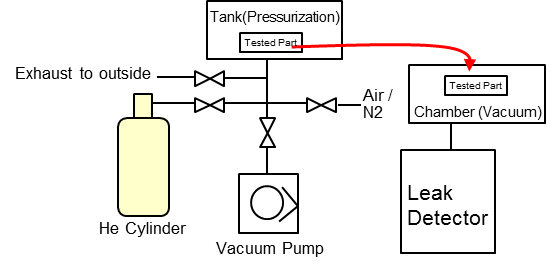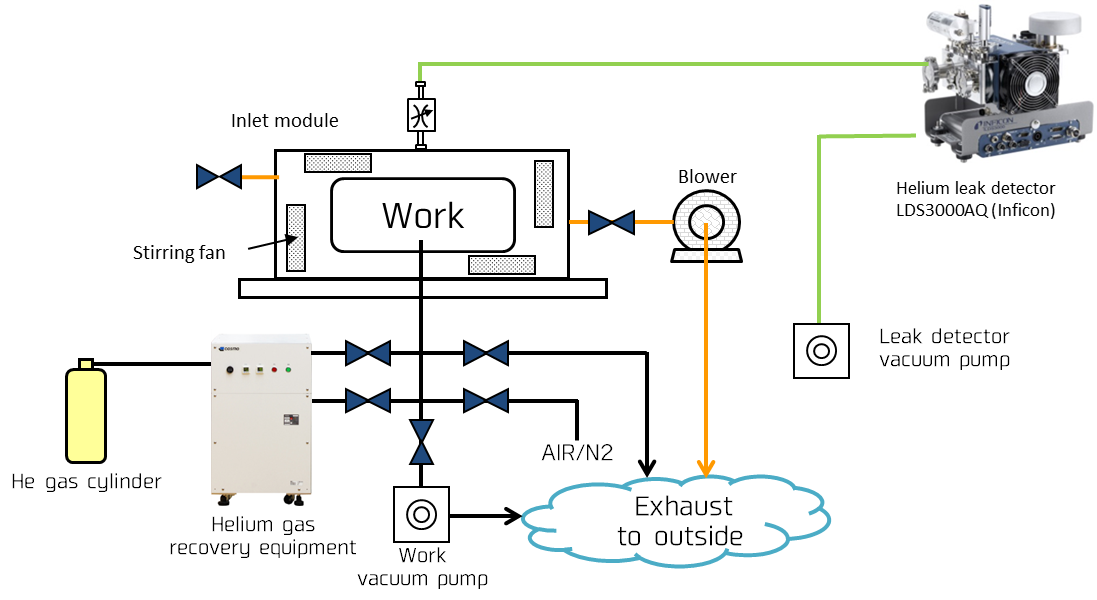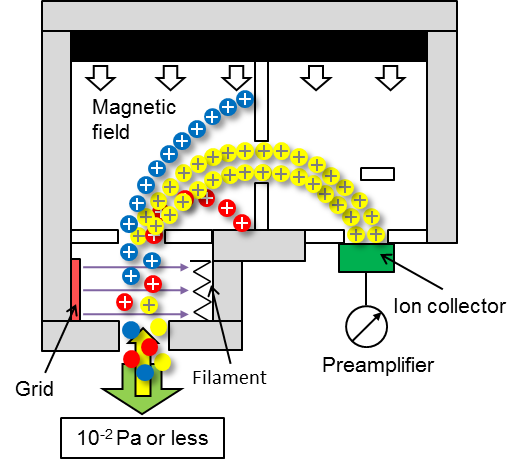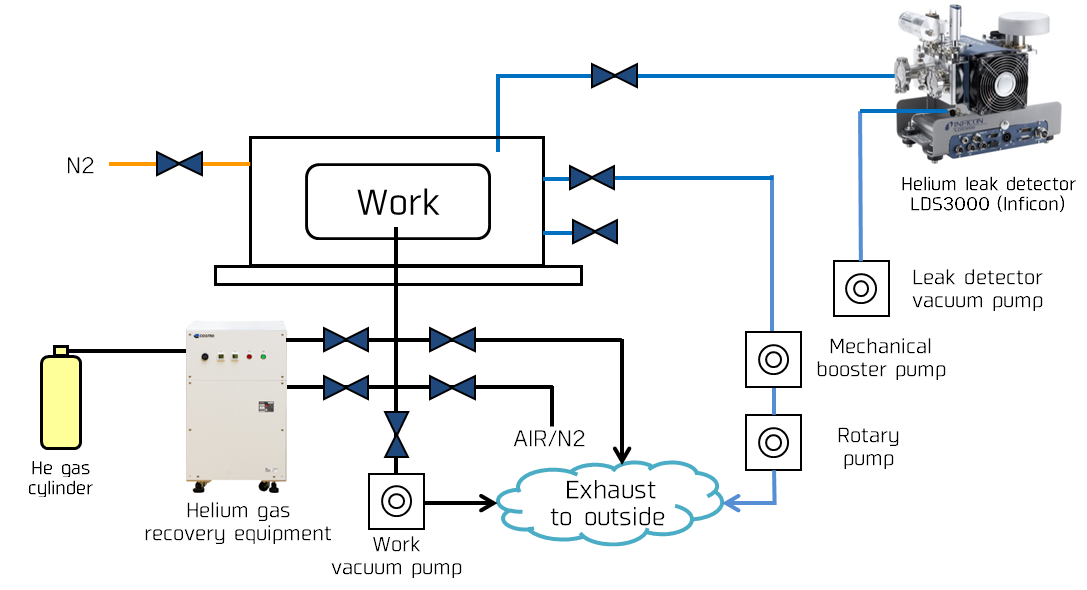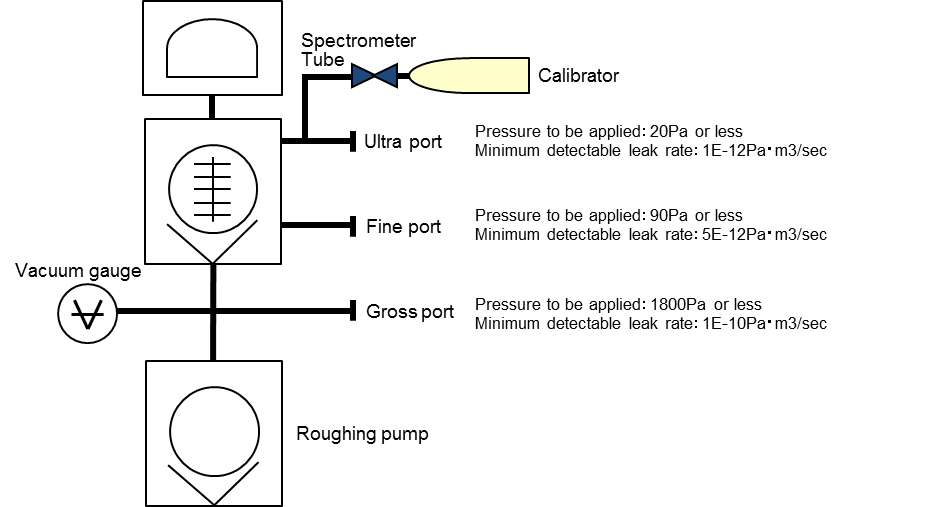
Hệ thống kiểm tra rò rỉ Helium Leak Test Machine
Giá bán: Liên Hệ.
- Mô tả sản phẩm
Ưu điểm của việc sử dụng khí Helium trong kiểm tra rò rỉ:
- Chỉ có 5 ppm khí Heli tồn tại trong khí quyển, vì vậy nó ít bị ảnh hưởng bởi nền (background) của môi trường thử nghiệm
- Heli là khí trơ, rất an toàn vì không có độc tính và gây cháy nổ
- Do kích thước phân tử nhỏ, Heli có thể lọt qua những chỗ rò rỉ dễ dàng
- Heli gần như không có trong khí thải của bộ phận được kiểm tra
Các phương pháp kiểm tra rò rỉ bằng khí Helium (Leak Test method using helium gas):
Phương pháp chân không (Vacuum Methods)
Vacuuming inside the tested part
● Vacuum spray method
● Vacuum hood method
Pressurizing inside of the tested part with helium gas
● Sniffer method
● Vacuum bell jar method
● Pressure accumulation method
● Bombing method
Cách chọn phương pháp Helium Leak Test phù hợp (How to select helium test method):
Đặc điểm của từng phương pháp Helium Leak Test (Feature of each test methods):
Helium gas mixer and helium gas recycle machine are available to reduce the running cost.
Please ask your nearest Cosmo office, if you are interested. We will provide the best solution, depending on the initial cost and running cost.
●Vacuum method
| Test Method | Detection Accuracy | Entire Part Test | Locating Leaks | Automation | Initial Cost | Running Cost | Maintenance Cost | Applicable Product |
| Vacuum Spray Method | 1E-09Pa・m3/sec or higher | × | ○ | △ | ○ | △ | △ | 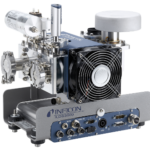 LDS3000 LDS3000 |
| Vacuum Hood Method | 1E-09Pa・m3/sec or higher | ○ | × | ○ | △ | △ | △ |
●Pressurization method
| Test Method | Detection Accuracy | Entire Part Test | Locating Leaks | Automation | Initial Cost | Running Cost | Maintenance Cost | Applicable Product |
| Vacuum bell jar Method | 1E-07Pa・m3/sec or higher | ○ | × | ○ | × | × | × |  LDS3000 LDS3000 |
| Bombing Method | 1E-09Pa・m3/sec or higher | ○ | × | ○ | ○ | △ | × | |
| Sniffer Method | 1E-06Pa・m3/sec or higher | × | ○ | △ | ○ | × | △ | 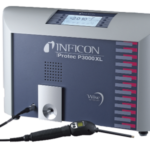 P3000(XL) P3000(XL) |
| Pressure Accumulation Method | 1E-05Pa・m3/sec or higher | ○ | × | ○ | △ | × | △ |  LDS3000AQ |
Chi tiết về các phương pháp Helium Leak Test (Details of Test Methods):
Vacuum method
●Vacuum Spray method
Inside of the tested part is vacuum-evacuated and helium gas is sprayed from outside of the tested part by a spray gun.
Helium that leaks into the tested part is detected.
●Vacuum Hood method
Inside of the tested part which is covered by a hood is vacuum-evacuated.
Inside of the hood is pressurized with helium, and helium leaks into the tested part is detected.
Pressurization method
●Sniffer method
Inside of the tested part is vacuum-evacuated and pressurized with helium.
Helium that leaks to the outside of the tested part is detected by the sniffer probe.
●Vacuum bell jar method
Tested part is placed in a chamber. Inside of the tested part is vacuum-evacuated and then pressurized with helium.
Inside of the chamber is also vacuum-evacuated and helium that leaks into the chamber is detected.
● Pressure Accumulation method
Tested part is placed in a hood and inside of the tested part is vacuum-evacuated.
Then, the inside of it is pressurized with helium.
The helium that leaks into the hood is accumulated for a certain period to detect the helium (concentration)
● Bombing method
Tested part is placed in a bombing tank which is vacuum-evacuated for a certain period.
Tested part is bombed with helium for a certain period and then removed from the tank and placed in the chamber which is vacuum-evacuated.
Helium that leaks into the chamber from the tested part is detected.
Circuit Configuration of Pressure Accumulation Method
Helium Detector LDS3000AQ Circuit Configuration
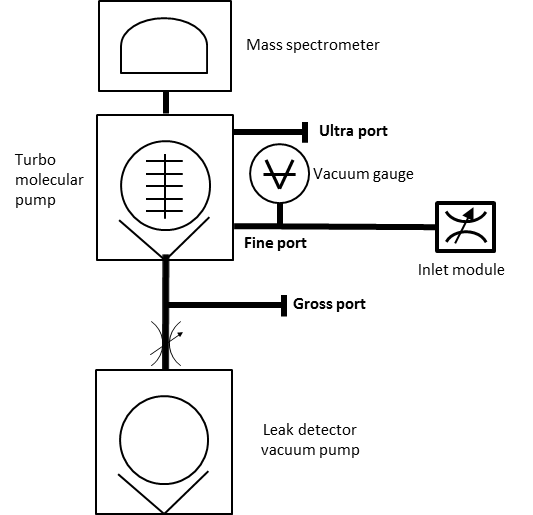 |
Principle of Helium Detection
180° Magnetic deflection mass spectrometer
1. The helium entering the LDS3000AQ reaches the mass spectrometer by the back-diffusion phenomenon by the turbo-molecular pump.
2. The molecules that have reached the mass spectrometer are converted into positive (+) ions by the electrons of the filament and move in one direction by the acceleration voltage.
3. The positive (+) ions separate into their orbits according to the mass of the gas (helium) when the positive (+) ions pass through the electric field.
4. Only the positive (+) ions of helium reach the ion collector and are converted into voltage signal and amplified for helium measurement.
Circuit Configuration of Vacuum Bell Jar Method
Helium Detector LDS3000 Circuit Configuration
Leak detector with valves to automatically select a port according to the pressure to be applied are available.
Feel free to contact Cosmo for more detailed information.
Principle of Helium Detection
180° Magnetic deflection mass spectrometer
1. The helium entering the LDS3000 reaches the mass spectrometer by the back-diffusion phenomenon by the turbo-molecular pump.
2. The molecules that have reached the mass spectrometer are converted into positive (+) ions by the electrons of the filament and move in one direction by the acceleration voltage.
3. The positive (+) ions separate into their orbits according to the mass of the gas (helium) when the positive (+) ions pass through the electric field.
4. Only the positive (+) ions of helium reach the ion collector and are converted into voltage signal and amplified for helium measurement.















